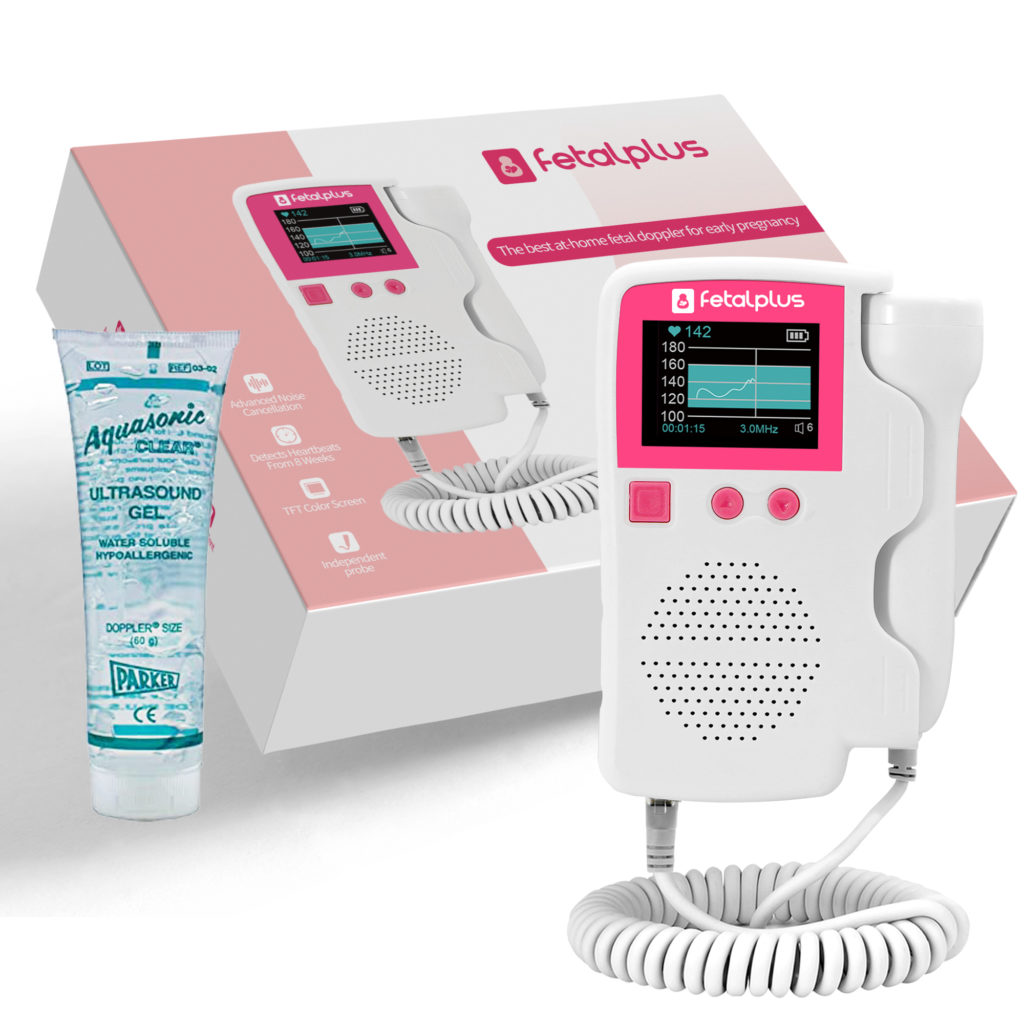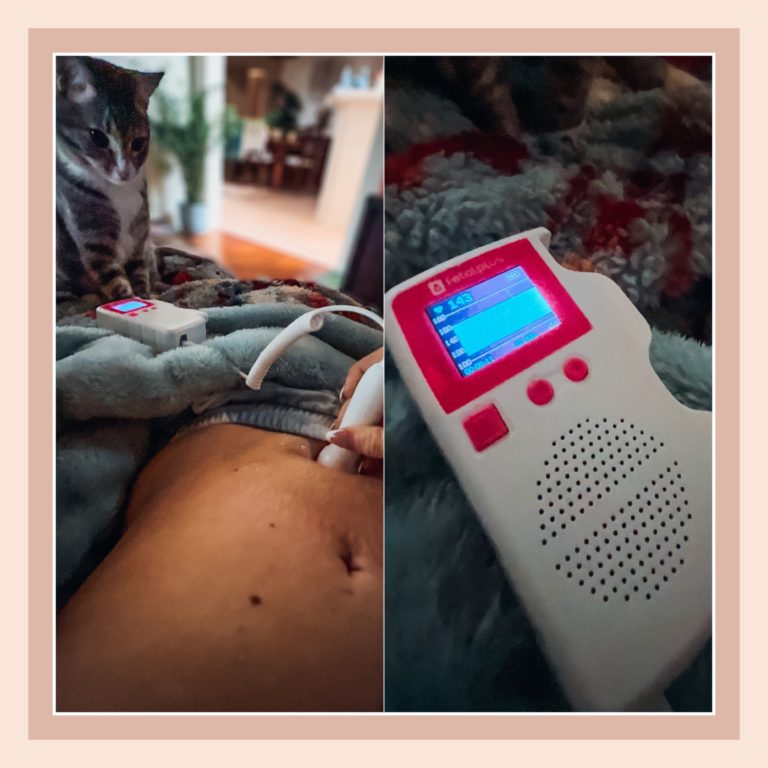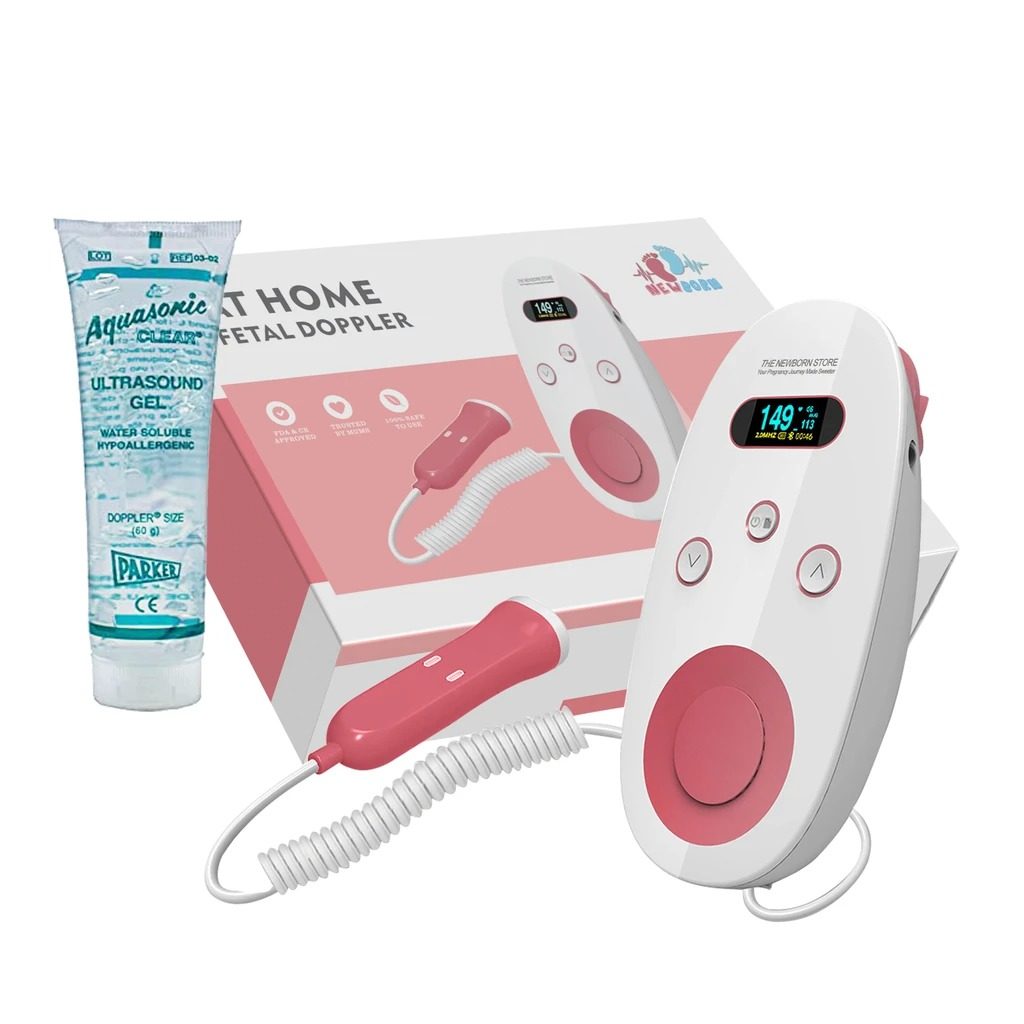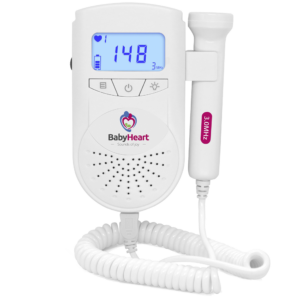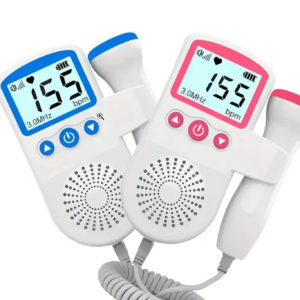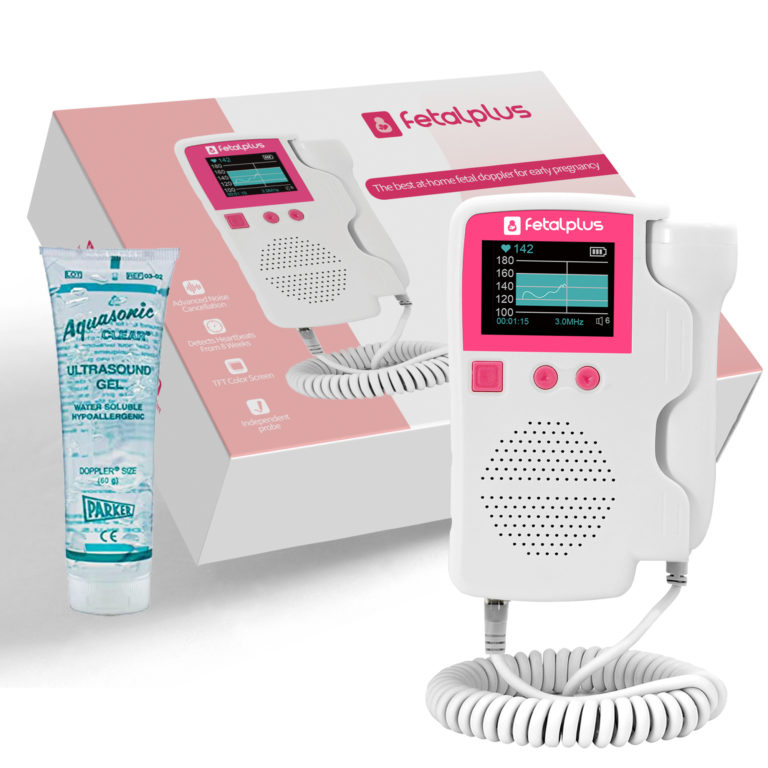Best At-home Fetal Dopplers For Early Pregnancy - A Midwife's Review

Emily Copley
Lead Maternity Carer/Registered Nurse & Midwife
Updated 1st of Jan, 2025
In my 10 years of experience as a Midwife, I have seen first-hand the convenience and peace of mind fetal dopplers have provided to thousands of parents throughout pregnancy. This review comprises 5 of the most discussed at-home fetal dopplers, based on the following factors: design, precision, ease-of-use, sound quality, advanced tech-features, safety, durability, portability, customization, price, and bonus. Read on to find the right at-home fetal doppler for you .
Midwives’ Choice promise to pay for every product we review 100% with our own funds and not taking anything from manufacturer so we are consistent in delivering the most transparent, reliable and unbiased information of the products for every mum. It’s a consortium of field experts and first-hand users of a myriad of products bringing you cutting-edge reviews aimed at helping you make fact-driven educated decisions.
RANKED # 1
FetalPlus At-home Fetal Doppler
Fetalplus owns a well-deserved top spot on my list of best fetal dopplers. The reason is simple — Fetalplus effectively detects fetal heart rate within the first trimester, as early as 9 weeks, thanks to its unique multi-sensor technology and 3Mhz probe. With numerous positive reviews on social media, it’s clear that FetalPlus has won the hearts of many moms. It’s no secret that other brands have tried to replicate the design of the FetalPlus, but none match its multi-sensor technology and performance. As a midwife, I’ve tested many similar dopplers, and none come close to FetalPlus’s reliable and consistent results.
- FDA Cleared
- Accurately measures fetal heartbeat as early as 9 weeks: when moms are not yet able to feel the baby movements and want peace of mind the most. A few other fetal dopplers claim to detect a baby's heartbeat in the first trimester, but in my experience, Fetalplus is the only doppler I’ve found that actually delivers on this claim
- 2 Display Modes: Real-time fetal reading display & curve chart with real time readings
- TFT color display: for pristine picture quality both day and night
- Smart Noise Cancellation: robust intelligent noise reduction feature conveyed to the listener in a crystal clear audio quality.
- 3 MHZ Probe: high-sensitivity probe that offers an impressive ± 2 BPM accuracy. Works perfectly for first trimester.
- 30 Days Money Back Guarantee
- US based. Free Shipping Available
- FREE 60ml Ultrasound Transmission Gel
- Accepts HSA/FSA Cards
- Shop Now, Pay Later with Sezzle
9.8
Our No.1 Pick!
Precision

Advanced tech-features

Ease-of-use

Noise-Cancellation

Design

Safey features

Value For Money

Verified Promo Code: Use code X30 upon checkout to get $30 OFF and free shipping
RANKED # 2
The Newborn Fetal Doppler
The Newborn fetal Doppler is a solid contender to Fetalplus. I’d recommend this doppler specifically to women with a higher BMI who may have difficulty hearing the baby’s heartbeat due to the extra body tissue.
- FDA & CE Approved
- Active Noise Cancelling Cancels background noise and amplifies the heartbeat
- 2 Customization Modes: Real-time fetal rate display, average fetal heart rate, and mean curve chart.
- Stylish Design: There's no doubt that the Newborn Fetal Doppler is one of the best looking dopplers in the market place.
- High-precision Monitoring: Separates the mother’s heartbeat from the baby’s resulting in an impressive ± 2 BPM accuracy which matches our winner FetalPlus.
- 30 Days Money Back Guarantee
- US Based. Free Shipping Available
- Free Ultrasound Transmission Gel
- Shop Now, Pay Later option
- Detects fetal heartbeat from 12 weeks onward may not meet the needs of some moms who seek reassurance in the first trimester/early second trimester when not feeling the baby movements
9.0
Solid Contender!
Precision

Advanced tech-features

Ease-of-use

Noise-Cancellation

Design

Safey features

Value For Money

Live Promo: Use code NB30 upon checkout to get $30 OFF and free shipping.
#3
BabyHeart’s Standard Doppler has a hefty price tag for what it offers. It’s a decent product, and I’ve a friend in Australia who swore by this her entire pregnancy but those outside of the country may find better value (and accuracy) in our top 2 choices.
- Large LCD display with backlight
- FDA approved
- Reasonably Clear Sound
- Hefty price tag
- Long shipping time
- Good accuracy but not the best
8.2
Our #3 Pick!
Precision

Advanced tech-features

Ease-of-use

Noise-Cancellation

Design

Safey features

Value For Money

#4
- Great Battery Life -Provide 9 hours of total playtime and 18 hours in total with the case.
- 3 Color Variants - Automatically turns off when reached a temperature of 122F for you and your family's safety.
- IP55 Waterproof Rating - Protected from dust, sweat, and splashes of water.
- Poor Noise-Cancellation - Can slightly block out noise but not enough for isolation.
- Expensive: $148
7.8
Our #4 Pick!
Precision

Advanced tech-features

Ease-of-use

Noise-Cancellation

Design

Safey features

Value For Money

#5
As a midwife, I’ve heard from many moms about the tempting prices of fetal dopplers on Temu. While the low prices are appealing, I always advise being cautious and doing thorough research before making a purchase.
- Available in multiple designs/colors
- Arguably the lowest-priced options
- Lack of FDA Approval & Uncertain Product Quality: Fetal dopplers sold on there may not have undergone the rigorous testing and approval process by the U.S. Food and Drug Administration (FDA) to ensure their safety and effectiveness.
- Shipping Delays: Moms have reported long shipping wait times when ordering from Temu, which can be frustrating, especially when expecting a timely arrival for prenatal monitoring.
- Limited or No Customer Support: challenging to seek assistance or resolve any problems that may arise.
6.8
Our #5Pick!
Precision

Advanced tech-features
Ease-of-use

Noise-Cancellation

Design

Safey features

Value For Money

A fetal heart monitor is a handheld device used to listen to a baby’s heartbeat. The doppler probe emits high-frequency sound waves that penetrate your skin and tissue to reach the baby. Once the waves encounter movement, like a beating heart, the sound wave bounces back to the device, translating it into an auditory signal. To ensure safety, at-home dopplers use low emission ultrasound technology. Gels or oil is used to pick up the sound-wave better.
Medical experts recommend that you do not use a fetal doppler until the 12th week of pregnancy. However, you might not hear the heartbeat until the 14th-16th week. The specific time may vary depending on the woman, but using it too early and not detecting anything causes unnecessary anxiety. This is why it’s recommended to wait till 12 weeks which is when I started to use mine, personally.
All pregnancy contains a certain amount of risk. Some women with chronic conditions such as kidney disease, diabetes, high blood pressure, and blood disorders are susceptible to a high-risk pregnancy. This doesn’t mean that they won’t deliver a healthy baby but being cautious is necessary.
One of the most significant benefits of fetal heart rate monitoring is that it allows you to monitor your pregnancy from the comfort of your own home. It also gives the parents a remarkable opportunity to bond with their little ones before they are born.
Fetal dopplers are used by medical professionals every day to detect the heartbeats of babies in the womb. At-home fetal dopplers work at a 40 times lower intensity than the waves emitted from an ultrasound machine you’d find at a doctor’s office.
The one common concern you’ll find regarding fetal dopplers is thermal risks— if you hold the device at a particular spot for a very long time, the tissue will heat up. This risk can be minimized and avoided by using the device sparingly (I only used it a handful of times throughout my pregnancy) and not holding the transducer at one spot for too long (I’d turn it off if I didn’t find the heartbeat in minute, then try again another time).
Also, I recommend connecting with your baby in other ways too, like feeling the baby’s kicks and movements. I did this towards the end of my pregnancy. This way you won’t be over-reliant on this device, since frequent use isn’t recommended.
This depends on the device, but typically the measurements are reliable but shouldn’t be used as a replacement for regular ultrasound appointments or doctor visits. NewBorn fetal doppler offers the highest accuracy with ± 1 BPM (for reference, industry-average is ± 2 BPM).
Keep in mind that a baby’s heartbeat is much faster than an adult’s.
If you’re in your first trimester and can’t hear your baby’s heartbeat, don’t worry. Dopplers, especially at-home types, can’t reliably detect a baby’s heartbeat until 12 weeks.
The average fetal heart rate is between 110-160 beats per minute and can vary by 5-25 beats per minute. BPM changes based on whether the baby is sleeping, or moving, and also depending on your uterus’s conditions. An abnormal heartbeat may signify that the baby isn’t getting enough oxygen or has another issue.
If your doctor is concerned about your baby’s heartbeat, they may recommend a fetal echocardiogram. This is a safe, non-invasive test that gives a detailed picture of your baby’s heart. It can help see if and what kind of irregular heartbeat (or arrhythmia) your baby may have so it can get the right treatment early.
Although reliable, this device does not replace ultrasound appointments or doctor visits. They shouldn’t be singularly relied upon for pregnancy reassurance, but it’s a great tool to have for checking in once-in-a-while or for bonding with your unborn baby. Again, I want to mention that this device cannot detect any health issues.
Yes, using an ultrasound gel is necessary, and most reputable doppler providers will offer gel for free with your purchase. The gel is usually a combination of water and a solvent called propylene glycol. It acts as a lubricant that seals the bond between the probe and the womb, eliminates extra air, and helps the sound travel better so the probe can pick it up accurately.
The device doesn’t emit any harmful radiation and is safe for both the mother and the baby.
I recommend reading and following the instructions provided in the manual that you receive with your purchase. That said, here’s a general overview of how to use a fetal doppler:
- Get in a reclining position, or lay down flat on your back.
- Turn on your doppler, and adjust its volume. Plugin the earphones if needed.
- Apply the ultrasound gel across your lower abdomen (if you purchase Newborn’s Fetal Doppler, you only have to place the gel on the probe, not your stomach)
- Place the doppler at the lower abdomen and slowly move it upwards.
- Cover different areas and try different device positions till you find the baby’s heartbeat (the Newborn’s Fetal Doppler comes with a handy chart that shows the optimal points to try based on your trimester. We find this very useful).
- Once finished, clean the device and your abdomen with a dry cloth.
Again, regardless of which you choose, don’t use this device every day and only use it for minimal periods of time. If you can’t find the heartbeat within one or two minutes, stop trying. Also, turn off the device once the baby starts moving.
There’s a rare chance that you’re listening to two heartbeats because there are two babies. But it’s more likely that you’re hearing the same heartbeat a few inches apart. If this happens, don’t be alarmed but get an ultrasound done for an accurate measurement.
Why FetalPlus At-home Fetal Doppler is the best?
Fetalplus owns a well-deserved top spot on my list of best fetal dopplers. The reason is simple — Fetalplus effectively detects fetal heart rate (FHR) as early as 9 weeks (12 weeks tend to be the norm with most fetal dopplers).
Here’s why this is important — most pregnant women want the freedom to check in on the baby throughout their pregnancy, especially when even a faint heartbeat is a meaningful experience for the parents to realize that bond with their baby. Outside the medical setting, Fetalplus is the only FDA-approved fetal doppler I can confidently recommend to women who want to safely check in on their baby between 9 to 12 weeks.
Fetalplus’ simple build makes it easy to use. The fetal heartbeat is displayed in two modes — curve display and Beats Per Minute (BPM) reading. The curve display gives you a snapshot of the BPM across a specific timeframe, while the BPM reading displays the FHR in numerical form.
The device has an LCD screen with a TFT color display, a combination that results in superior picture quality with sharp visuals 24/7. You can even use it in a dark room as the back-lit screen display makes the FHR result visible without turning the lights on.
The FetalPlus At-home Fetal Doppler has a built-in speaker and has a headphone jack. Moreover, its 3MHZ, high-sensitivity probe, and robust intelligent noise reduction feature ensure that the high-precision detection of ± 2 BPM is possible and conveyed to the listener in a crystal clear audio quality. The mother may often choose to use this device in family gatherings where there might be a lot of background noise. This device’s noise cancellation feature will ensure that the irrelevant cacophony is eliminated, and you can zone into your baby’s heartbeat.
Our Final Verdict
Fetalplus At-home Fetal Doppler is my No.1 choice for early pregnancy. While The Newborn Fetal Doppler is a great alternative for mums with higher BMI.
Both are made from medical-grade material and is FDA approved. As a midwife, I can assure you that responsible and sporadic use of FDA-approved medical-grade newborn fetal Doppler is entirely safe for both the mother and the baby, as it does not emit any radiation or heat.
LIVE Promo Code: Fetalplus currently has a discount code X30 to get $30 OFF your purchase.



